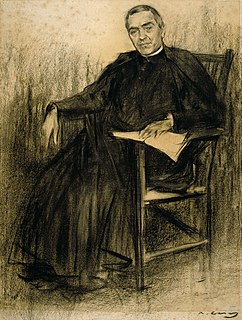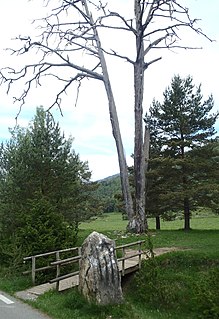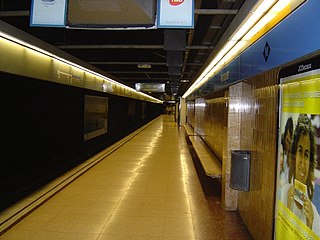 W
WJacint Verdaguer i Santaló was a Spanish writer, regarded as one of the greatest poets of Catalan literature and a prominent literary figure of the Renaixença, a cultural revival movement of the late Romantic era. The bishop Josep Torras i Bages, one of the main figures of Catalan nationalism, called him the "Prince of Catalan poets". He was also known as mossèn (Father) Cinto Verdaguer, because of his career as a priest, and informally also simply "mossèn Cinto".
 W
WA Barcelona is a poem by Jacint Verdaguer, published in 1883. It is a triumphant song of the transformation undergone by Barcelona since the mid-19th century.
 W
WPi de les tres branques is a dead pine tree located in the countryside near the town of Berga in north-central Catalonia, Spain. It has long been regarded by some Catalan nationalists as representing the unity of the three "Catalan Countries" and is the site of regular political-cultural gatherings.
 W
WPlaça de Mossèn Jacint Verdaguer is a square in the Eixample district of Barcelona, Catalonia, Spain. It lies in the intersection between Avinguda Diagonal, the city's main avenue, and Passeig de Sant Joan, in Dreta de l'Eixample, not far from the Sagrada Família.
 W
WThe Verdaguer House Museum is a literary museum in Folgueroles, birthplace of poet Jacint Verdaguer, in the region of Osona. It was opened in 1967 and is part of the Barcelona Provincial Council Local Museum Network.
 W
WVerdaguer is a station in the Barcelona metro network, located under Plaça de Mossèn Jacint Verdaguer, in Eixample, named after the Catalan poet Jacint Verdaguer. It's served by L4 and L5.
 W
WViŀla Joana is a masia located in Vallvidrera in the middle of Collserola Natural Park. It is a two storey building with a watchtower and lateral galleries. One of its most distinctive elements is the clock on the main façade.